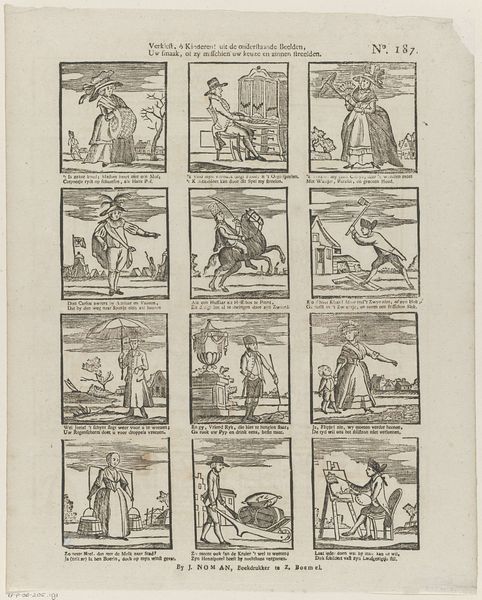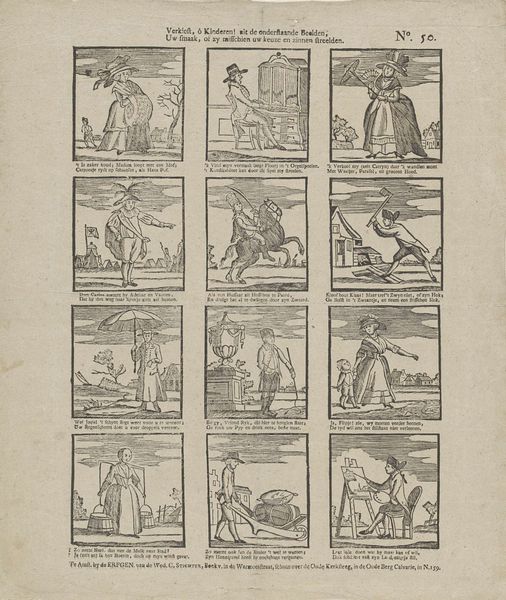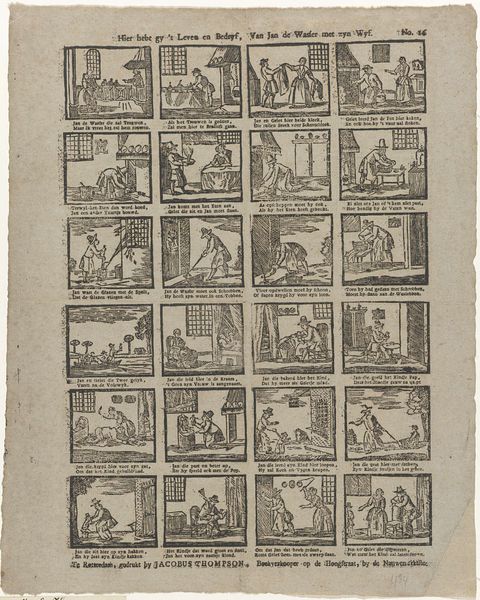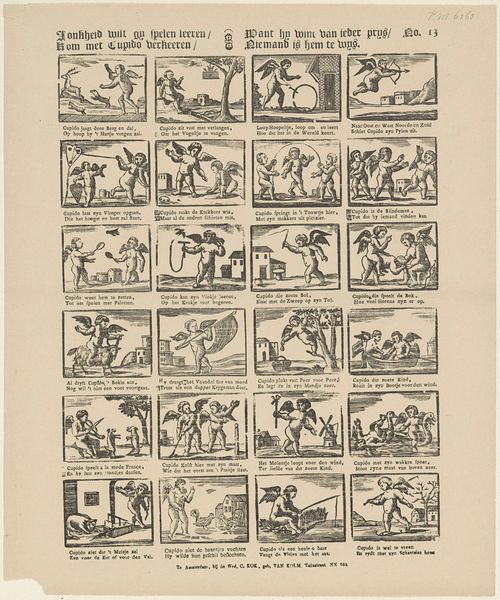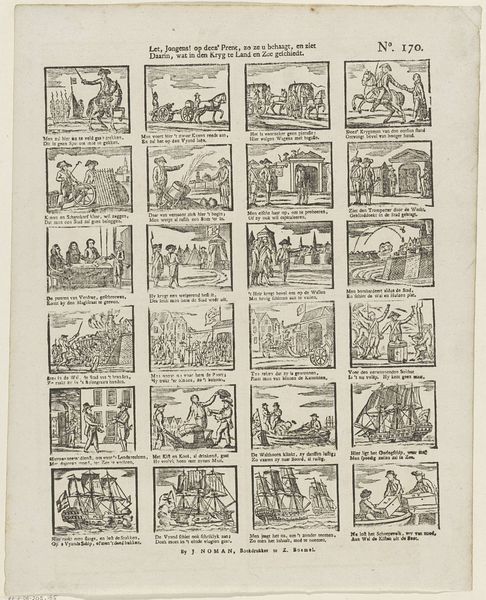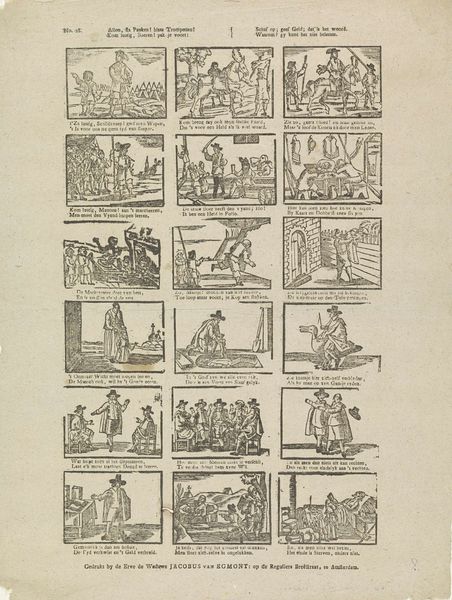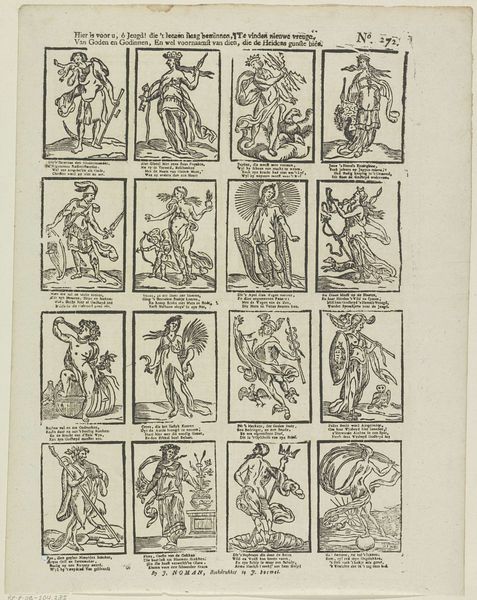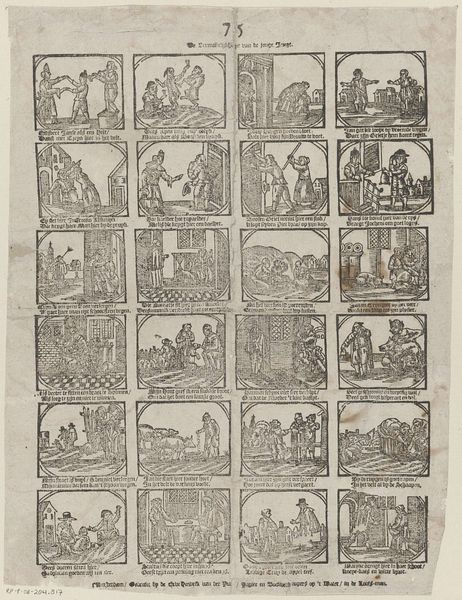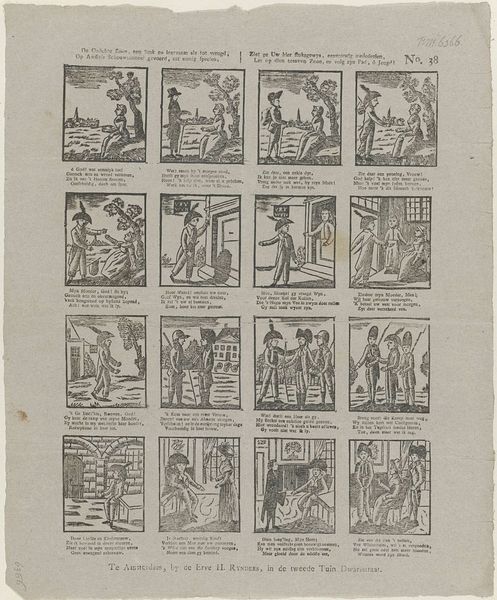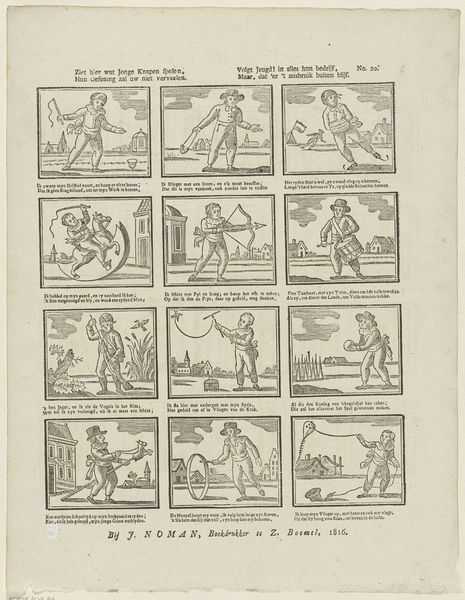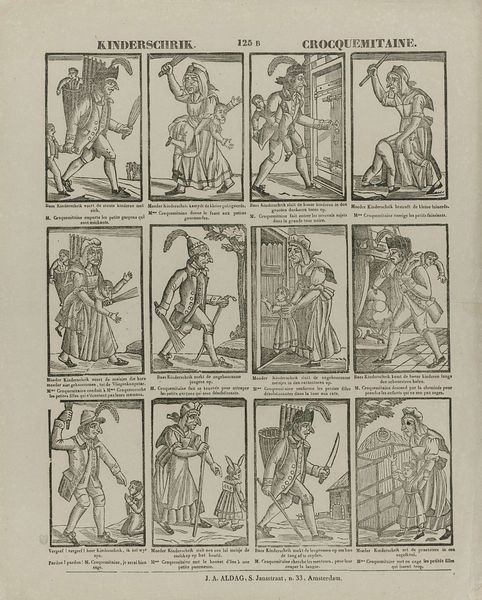
Elk doet wat hy verkiest in 't voegen van zyn smaak, / De een' oefent zich in 't werk, en de ander' in vermaak 1806 - 1830
0:00
0:00
print, paper, engraving
#
narrative-art
#
dutch-golden-age
# print
#
pen sketch
#
figuration
#
paper
#
line
#
genre-painting
#
engraving
Dimensions: height 400 mm, width 315 mm
Copyright: Rijks Museum: Open Domain
Editor: This engraving, "Elk doet wat hy verkiest in 't voegen van zyn smaak..." roughly translates to "Each does what he prefers according to his taste..." It’s attributed to Johan Noman and dates to sometime between 1806 and 1830. The images feel so… everyday. Almost like snapshots of Dutch life. How do you interpret this kind of “genre painting” presented as a print? Curator: It’s crucial to consider the social function of prints like this in the 19th century. This wasn't fine art meant for a gallery; it was designed for mass consumption. It served an educational, even moralizing, purpose, but was also undoubtedly a popular source of entertainment and perhaps news dissemination. What strikes you about the title in relation to the individual scenes? Editor: Well, the title emphasizes individual preference, but the images themselves portray very common, almost mundane activities, mostly performed by men. There’s someone fishing, another hammering, others transporting goods or walking. There’s not a great deal of...choice seemingly on offer? Is it that freedom resides in the *attitude* with which one approaches these tasks? Curator: Exactly. It suggests a burgeoning sense of individuality within a rapidly modernizing society. These weren’t portraits of the elite. Rather, we’re looking at a representation of daily labor and recreation that was starting to circulate amongst a growing middle class, giving them a new consciousness of themselves as members of society with individualized agency. Who gets to participate in this vision of Dutch life? Are there any absences that strike you? Editor: Good point! There seem to be few women represented here and the whole collection seems quite gendered! Looking at it through that lens it is quite exclusionary. Curator: Precisely, and analyzing art in such ways help expose what cultural messages they convey to the masses and in which way are these political messages conveyed. Editor: Thanks! This print suddenly tells a larger story about the public role of art and its ties to socio-political forces at work! Curator: Indeed. Recognizing the social function and omissions in art provide rich understandings of the past.
Comments
No comments
Be the first to comment and join the conversation on the ultimate creative platform.
